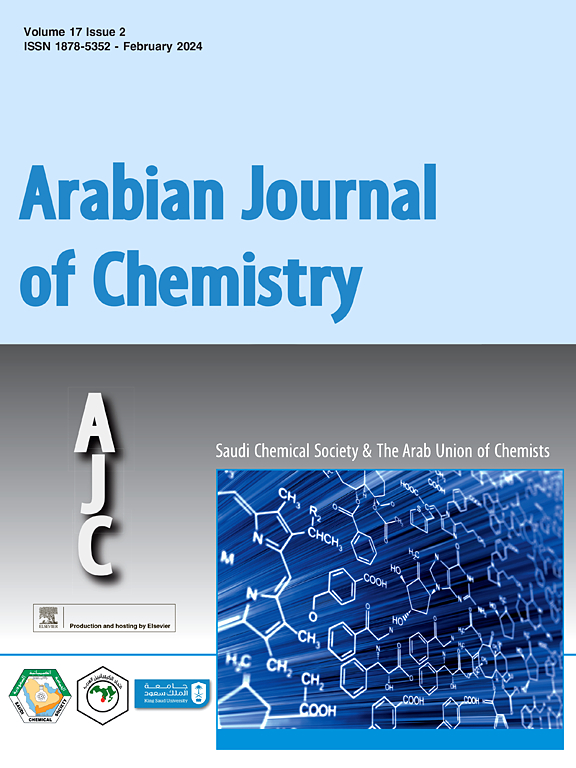利用电化学辅助溶胶-凝胶法制备镧硅薄膜,增强烧结钕铁硼的耐腐蚀性能
IF 5.2
2区 化学
Q2 CHEMISTRY, MULTIDISCIPLINARY
引用次数: 0
摘要
采用电化学辅助溶胶-凝胶法在烧结钕铁硼表面镀上一层硅烷镧膜,以提高其保护性能。电化学辅助沉积机理是在施加阴极电位的情况下在表面发生局部碱催化反应,从而促进烧结钕铁硼基底表面水解硅醇基团的缩合反应,并在硅烷膜中生成氧化镧/氢氧化物。接触角测试结果表明,与裸烧结钕铁硼基底相比,镧硅烷薄膜的疏水性大大增强,水接触角大于 150°。同时,电化学测量表明,掺镧硅烷薄膜显著降低了烧结钕铁硼磁体在 3.5 wt% NaCl 溶液中的腐蚀速率,Icorr 值为 5.26 × 10-7 A cm-2,保护效率达到 92.5%。此外,还评估了镧硅薄膜涂层烧结钕铁硼样品的磁性能,其影响可以忽略不计。本文章由计算机程序翻译,如有差异,请以英文原文为准。
Fabrication of lanthanum-silane film by electrochemically assisted sol–gel method for enhanced corrosion resistance of sintered NdFeB
The surface of sintered NdFeB was coated with a lanthanum-silane film using an electrochemically assisted sol–gel method to improve its protective performance. The electrochemically assisted deposition mechanism is localized alkali catalysis at the surface with an applied cathodic potential, which promotes the condensation reaction of hydrolyzed silanol groups on the sintered NdFeB substrate surface and the production of lanthanum oxide/hydroxide in the silane film as well. Contact angle test results indicated that the hydrophobicity of the lanthanum-silane film was considerably enhanced compared to the bare sintered NdFeB substrate, and the water contact angle was above 150°. Meanwhile, electrochemical measurements suggested that the lanthanum-doped silane film significantly reduced the corrosion rate of the sintered NdFeB magnet in a 3.5 wt% NaCl solution with an Icorr value of 5.26 × 10−7 A cm−2, and the protection efficiency reached 92.5 %. Furthermore, the magnetic properties of the lanthanum-silane film-coated sintered NdFeB sample were also evaluated and the effect was negligible.
求助全文
通过发布文献求助,成功后即可免费获取论文全文。
去求助
来源期刊

Arabian Journal of Chemistry
CHEMISTRY, MULTIDISCIPLINARY-
CiteScore
10.80
自引率
3.30%
发文量
763
审稿时长
63 days
期刊介绍:
The Arabian Journal of Chemistry is an English language, peer-reviewed scholarly publication in the area of chemistry. The Arabian Journal of Chemistry publishes original papers, reviews and short reports on, but not limited to: inorganic, physical, organic, analytical and biochemistry.
The Arabian Journal of Chemistry is issued by the Arab Union of Chemists and is published by King Saud University together with the Saudi Chemical Society in collaboration with Elsevier and is edited by an international group of eminent researchers.
 求助内容:
求助内容: 应助结果提醒方式:
应助结果提醒方式:


